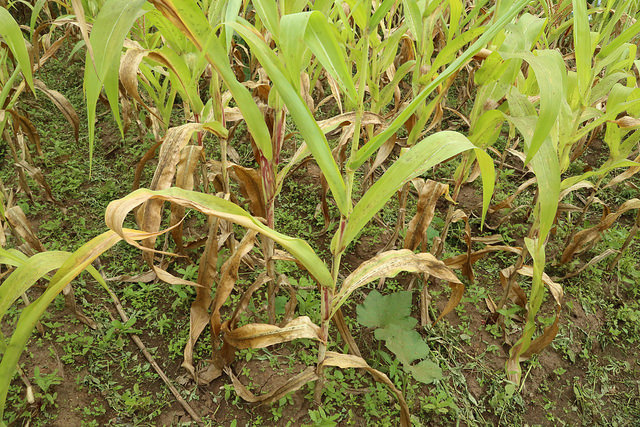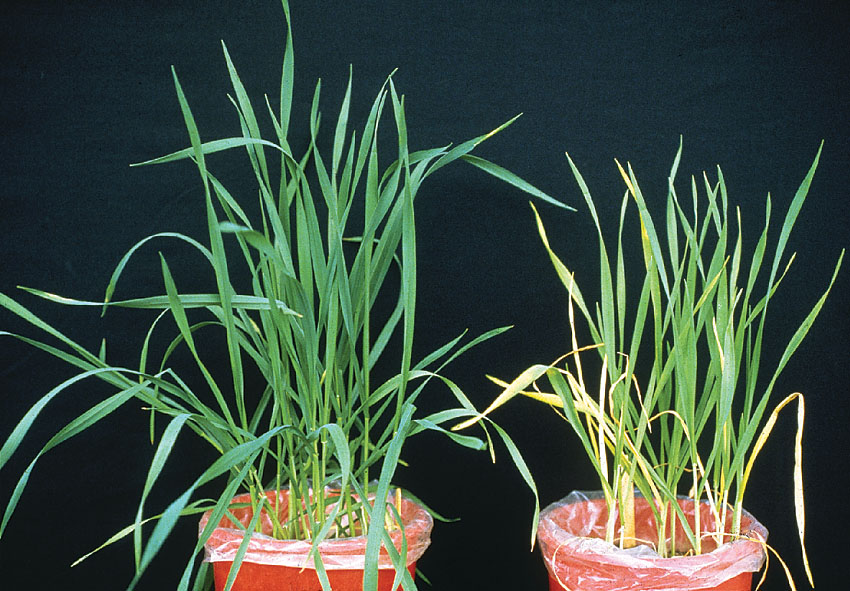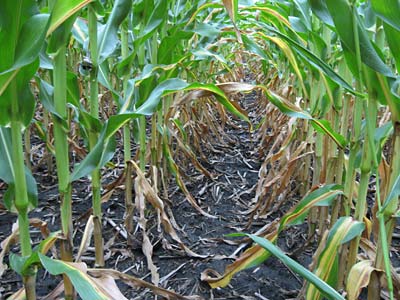More effort has been spent on the management of nitrogen (N) than any other nutrient, since the world’s ecosystems are substantially impacted by deficiencies or excess of N. If it is not for the biological fixation of N from the atmosphere by specific groups of soil microorganisms, and for the recycling back to the soil of much of the N taken up by plants, deficiencies of N would be even more widespread. See the Soil Web for more information on N sources, losses, and transformations in the soil.
Nitrogen is an integral component of all amino acids, which are the building blocks of proteins, including the enzymes, which control virtually all biological processes. Other compounds that include N are nucleic acids (in which hereditary control is contained) and chlorophyll (the key compound of photosynthesis).

Common methods used to measure total N in soils include:
- Kjeldahl digestions (Total Kjeldahl Nitrogen – TKN)
- Carbon-Nitrogen analyzer (CN Analyzer)
AVAILABLE NITROGEN
The portion of N available for plant uptake is commonly estimated by the following two extractions:
- Potassium chloride (KCl) extraction Usually a 1 M or 2 M KCl solution. Note that you can save the first KCl solution used in a CEC extraction to measure the nitrate and ammonium concentrations.
- Potassium sulfate (K2SO4) extraction This is a slightly stronger solution than KCl. It extracts inorganic nitrate and nitrite.
Colorimetric analysis of extracts by flow injection analysis (FIA) can be done to determine concentrations of nitrate, nitrite, and ammonium.
Click here to download a video notes sheet before watching the following video.
Calculation
Results are generally reported as ppm (i.e., μg/g soil). 
x = Sample reading (μg/mL)
b = Blank reading (μg/mL)
E.V. = extract volume (mL)

References and Resources
- Bremner, J.M. 1996. Nitrogen – total. In Sparks, D.L. (ed). Methods of Soil Analysis: chemical methods. Part 3. Soil Sci. Soc. Am. Book Series No. 5. ASA-SSSA, Madison, WI.
- Dahnke, W.C., and G.V. Johnson. 1990. Testing soils for available nitrogen. In Westerman, R.L. (ed). Soil Testing and Plant Analysis. 3rd edition. ASA-SSSA, Madison, WI.
- Hossner, L.R. 1996. Dissolution for total elemental analysis. In Sparks, D.L. (ed). Methods of Soil Analysis: chemical methods. Part 3. Soil Sci. Soc. Am. Book Series No. 5. ASA-SSSA, Madison, WI.
- Maynard, D.G., Y.P. Kalra, and J.A. Crumbaugh. 2008. Nitrate and exchangeable ammonium nitrogen. In Carter, M.R., and E.G. Gregorich (eds). Soil Sampling and Methods of Analysis. 2nd ed. Canadian Society of Soil Science, CRC Press and Taylor & Francis Group. Oxford, UK.
- Mulvaney, R.L. 1996. Nitrogen – inorganic forms. In Sparks, D.L. (ed). Methods of Soil Analysis: chemical methods. Part 3. Soil Sci. Soc. Am. Book Series No. 5. ASA-SSSA, Madison, WI.
- Rutherford, P.M., W.B. McGill, J.M. Arocena, and C.T. Figueiredo. 2008. Total nitrogen. In Carter, M.R., and E.G. Gregorich (eds). Soil Sampling and Methods of Analysis. 2nd ed. Canadian Society of Soil Science, CRC Press and Taylor & Francis Group. Oxford, UK.
- Soil Survey Staff. 2009. Soil Survey Field and Laboratory Methods Manual. Soil Survey Investigations Report No. 51, Version 1.0. R. Burt (ed.). U.S. Department of Agriculture, Natural Resources Conservation Service. Version 2.0 (2014) available at: https://www.nrcs.usda.gov/Internet/FSE_DOCUMENTS/nrcs142p2_052226.pdf
- Soon, Y.K., and B.C. Liang. 2008. Nonexchangeable ammonium. In Carter, M.R., and E.G. Gregorich (eds). Soil Sampling and Methods of Analysis. 2nd ed. Canadian Society of Soil Science, CRC Press and Taylor & Francis Group. Oxford, UK.
- Stevenson, F.J. 1996. Nitrogen – organic forms. In Sparks, D.L. (ed). Methods of Soil Analysis: chemical methods. Part 3. Soil Sci. Soc. Am. Book Series No. 5. ASA-SSSA, Madison, WI.
